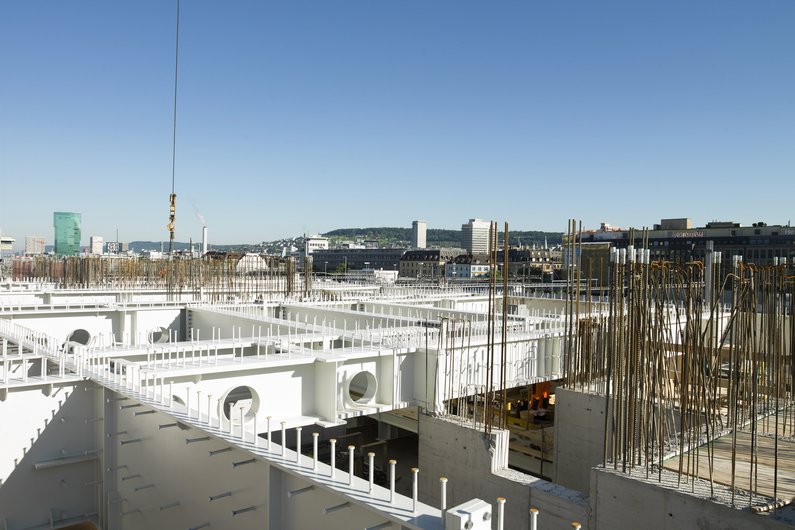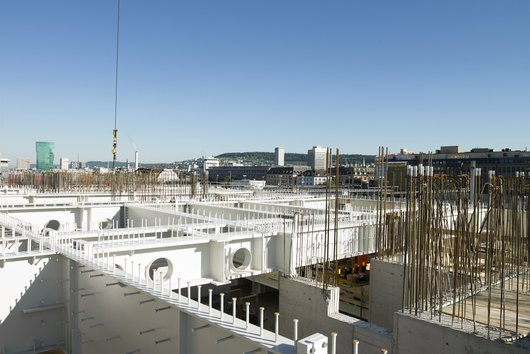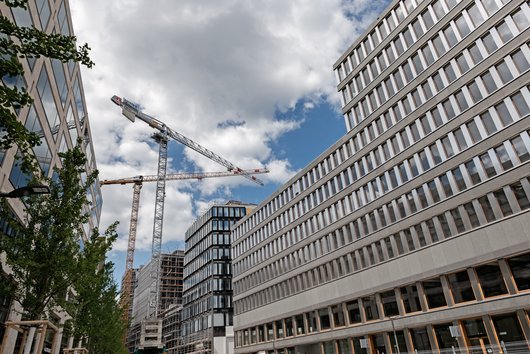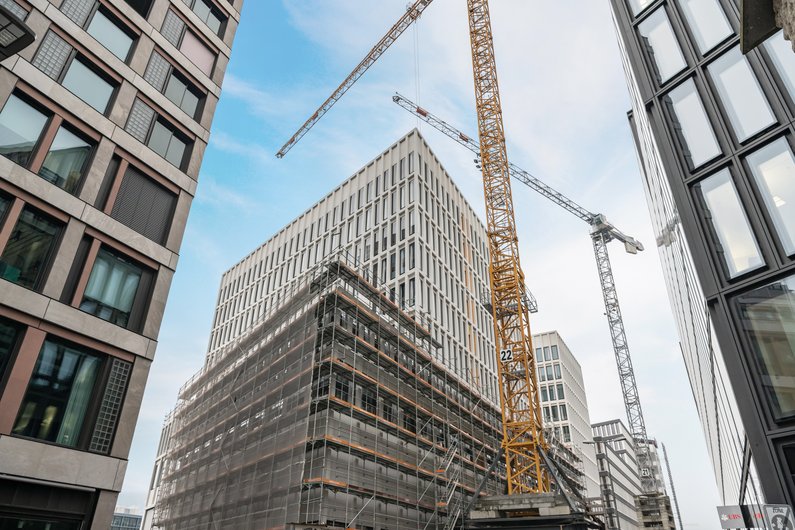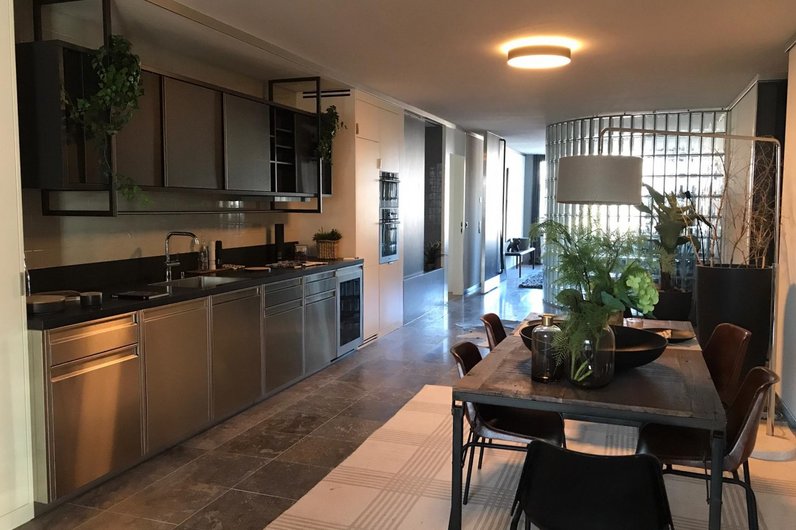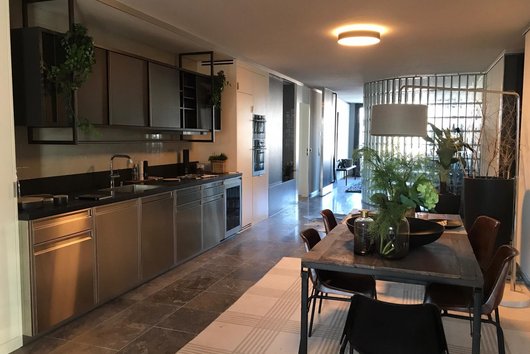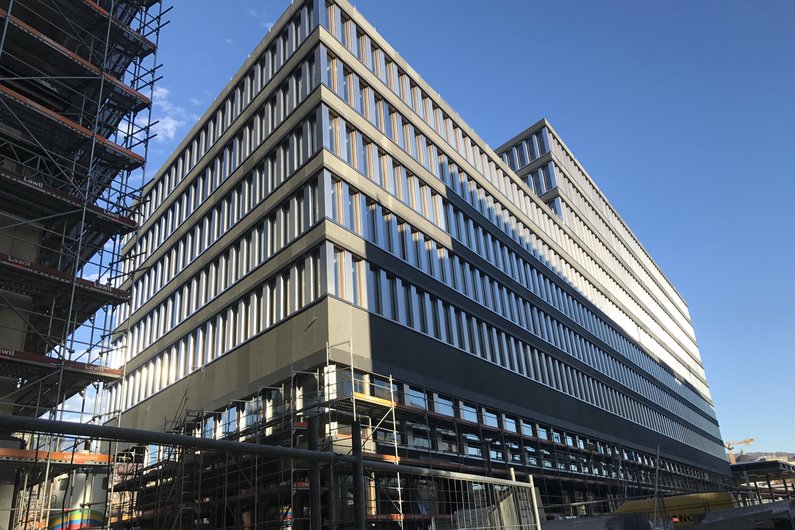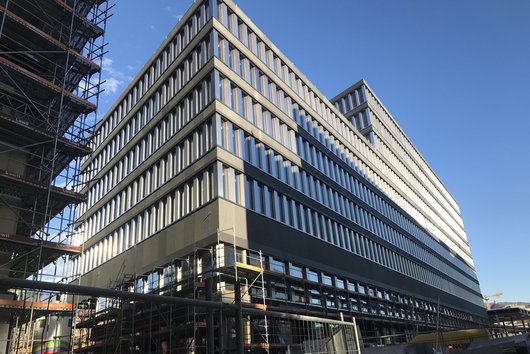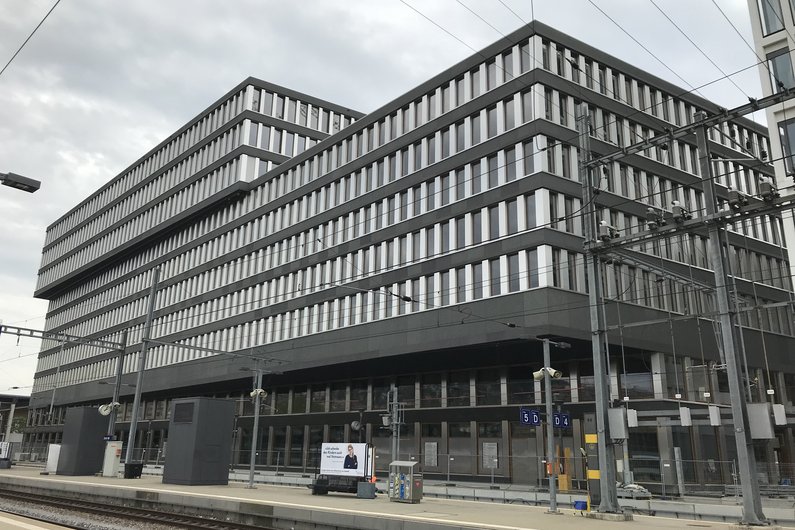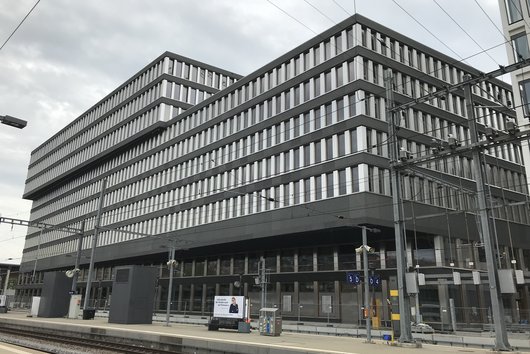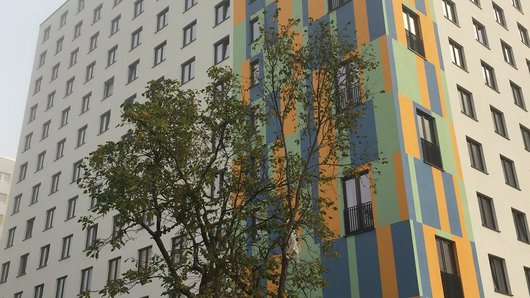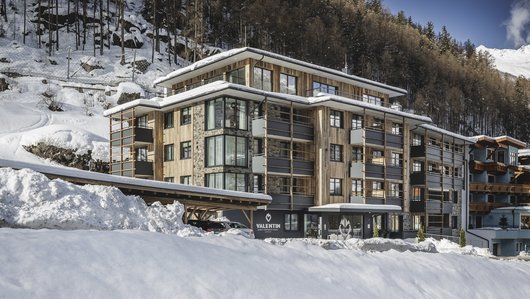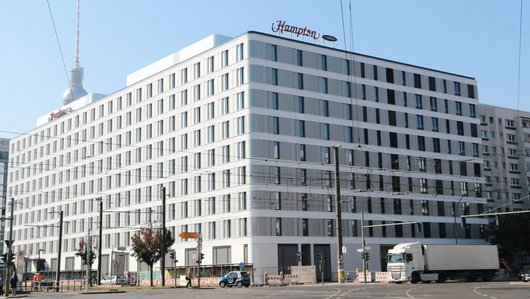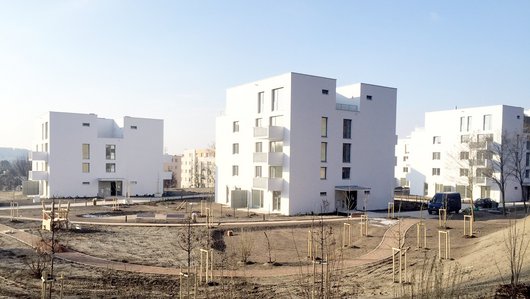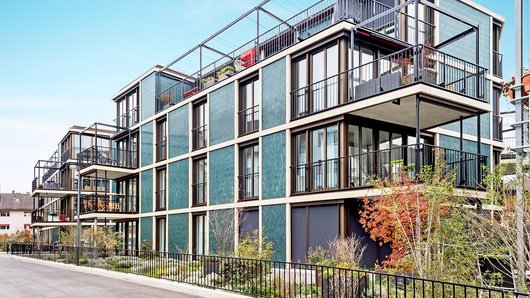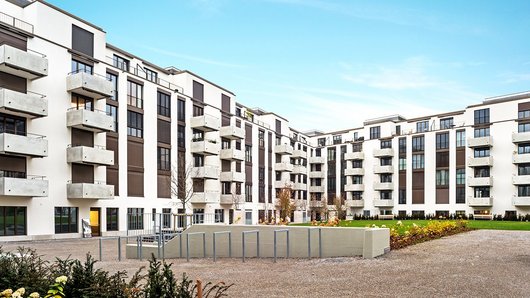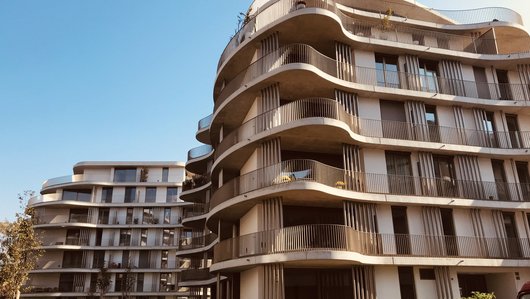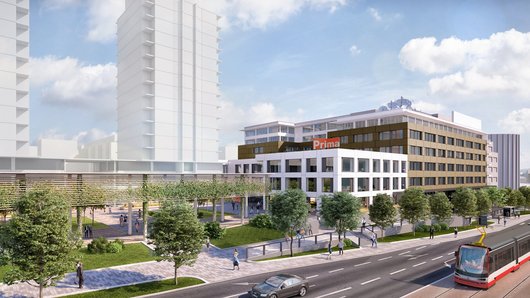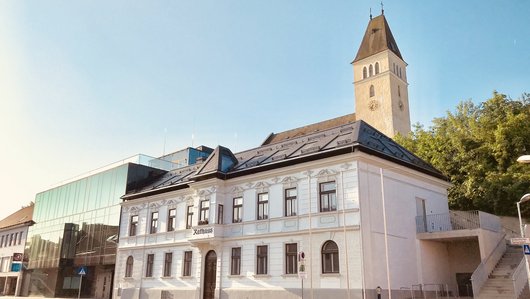
Europaallee urban quarter Zurich central railway station
The Europaallee quarter in Zurich is one of the most significant areas of urban development in the Swiss capital. PORR completed work on three of the eight cons
Zurich central railway station is one of the busiest in the world. This presented numerous challenges, not least in terms of logistics. In addition, a coordinated approach had to be adopted when it came to planning and implementing the construction pits for the individual construction sites. Parts of the buildings also had to be constructed above and below the railway tracks.
-
EmployerSBB AG
-
ContractorPORR SUISSE AG
-
Project typeBuilding construction
-
Order volumeCHF 310m (EUR 286m)
-
Construction start04/2015
-
Construction end06/2020
Overview
The Europaallee urban quarter beside Zurich central railway station can look back on a colourful history. Ideas for repurposing the 80,000m² site immediately adjacent to the city’s central station were first gathered back in the 1970s under the name ‘HB Südwest’ – before being discarded shortly after. A further attempt at reutilisation came around the turn of the millennium in the ‘Eurogate’ project, which was defeated in a popular referendum in 2001. But the third attempt, the project now known as ‘Europaallee’, successfully gained approval in 2004. At the time, the Swiss Federal Railways (SBB) and the City of Zurich launched a joint urban-planning process with the aim of adding sustainable value to the disused site. The result is a new urban quarter comprising eight construction sites. In addition to 400 apartments and 170 hotel rooms, the new quarter provides 8,000 jobs and space for 4,800 students at the Zurich University of Teacher Education (construction site A), KV Business School (Sihlpost building) and a Juventus school (construction site H). Through its involvement in construction sites B, D and F, PORR SUISSE AG played a significant role in the creation of Zurich’s new landmark.
Slender beauty
The building erected on construction site B, which was designed by Zurich-based architectural office Stücheli, stands at the entrance to the new Europaallee quarter along with the listed Sihlpost building. Constructed on a narrow trapezoidal parcel of land between the railway tracks and Europaplatz, the new building is made up of a two-story base and a seven-story timber-frame construction.
Even the construction pit proved a genuine challenge for PORR. Due to the density of the overall project, it was not possible to plan and implement the construction pits separately for the individual sites and lots. Consequently, the construction pits for site B, site D and the “Europaallee stairway” and “Bike park” lots had to be planned and implemented together. The fact that some parts of the new building were to be constructed above and beneath the railway station’s platforms proved a complication. Another challenge lay in the need to reroute a media duct responsible for the station’s utility supply and waste disposal systems. The station’s district heating supply also had to be maintained throughout the construction period.
The construction pit was secured using a combination of (soldier-pile) retaining walls and sheet-pile walls before being back-anchored with numerous rows of anchors. The accumulated water was captured in pump shafts, subjected to an automatic quality inspection and then pumped into the Sihl River.
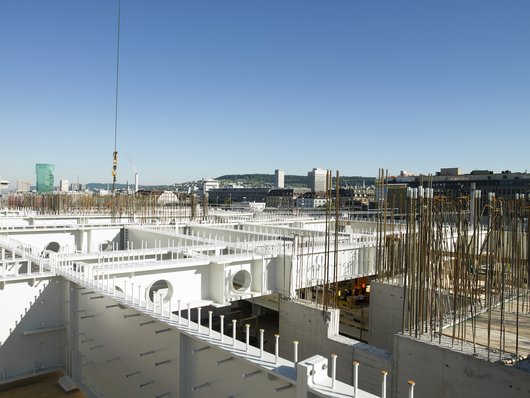

Europaallee was a classic large-scale, inner-city construction site, complete with all the challenges associated with such developments. In addition to transporting materials and workers on and off the site, we also had to control large flows of passengers moving to and from the railway station.
Complex logistics
Europaallee was a classic large-scale, inner-city construction site, complete with all the challenges associated with such developments. The construction site logistics, for example, were planned in close coordination with the SBB and the authorities. In addition to transporting materials and workers on and off the site, we also had to control large flows of passengers moving to and from the railway station. PORR implemented extensive signposting measures to achieve this, along with safe barriers separating the routes to the platforms and the construction site.
On site B, the ceiling above the first floor is made up of 13 load-transfer girders. Unlike in the original plans, we used a steel construction for this section in order to handle the load effects.
Optimal construction
The building on site B is a reinforced concrete skeleton construction with hinged supports, reinforced concrete ceilings and stabilising cores on each floor. It also boasts a few special features, including sections extending over and under the platforms, a substructure built on different substrates, and load-distribution ceilings above the basement floors and above the first floor. The ceilings had to “take loads for a walk” in order to keep areas in the basement floors and ground floor that are intended for deliveries and as hospitality and retail spaces free from supporting columns.
A large, cantilevered section was also constructed above the first floor, with loads from the eight floors above applied to this section. The ceiling for the entire first floor serves as a solid transition slab for the floors above – i.e. from the second to sixth floors – or to the ninth floor in taller sections of the building. The second cantilevered section with a transition slab, this time on the sixth floor, bears the load from the floors above, from the seventh to the ninth floor. The ceiling above the first floor is made up of a total of 13 load-transfer girders. The original intention was to install these beams with section dimensions of 3.13m x 1.80m and as pre-stressed reinforced-concrete girders. However, due to stress effects arising from the building’s dead load and live load, and the resulting short-term and long-term deformation this would cause, all of these load-transfer girders were realised in structural steel. The team erected the ceiling above it as a steel-concrete composite construction.
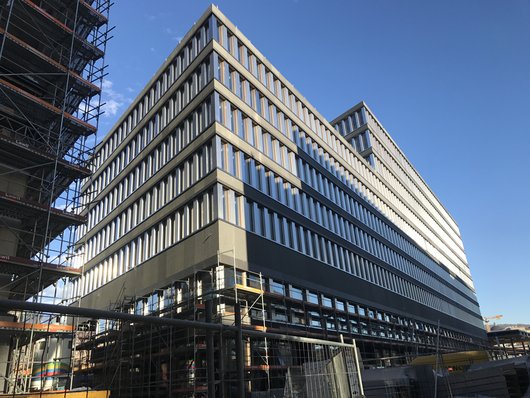

Curtain wall
Made from black Swedish granite, the banding that surrounds the upper floors emphasises the building’s numerous storeys. Between the bands are supports clad in electro-polished stainless steel and windows with eucalyptus wood frames. The windows are shaded by external blinds with micro-louvre blades.
The entire façade is a curtain wall system. It transfers its loads into the front ends of the ceilings on each floor. The banding areas have been realised as a ventilated façade construction. The façade has been cladded in perforated stone slabs made from black Swedish granite.
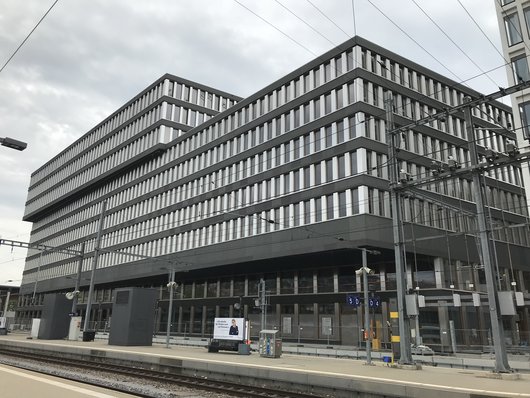

Technical data for site B
-
Gross floor areaapprox. 24,000 m²
-
Office space12,300 m²
-
Retail & hospitality space2,450 m²
-
Length113 m
-
Width21.14 m
-
Height39.95 m
-
Façade area10,717 m²
-
Building volume112,155 m³
-
Gross floor volume8,463 m³
Two towers
Like the building on site B, the two six-storey towers on site D also exceed the high-rise threshold. At the base of the towers, which were designed by Dutch firm Wiel Arets Architects, the two merge in a four-storey base, which also projects over the tracks on the railway side.
The restrained use of colour in this project is particularly striking. The closed parts of the façade are made from white concrete, while the metal façade elements are made from burnished brass. This combination of materials also dominates the building’s interior. The entrance areas and lifts feature terrazzo flooring and the walls of the lift cars have been finished in burnished brass.
High proportion of glass
The entire façades of both towers, like the building on site B, are curtain wall systems that transfer their loads into the front ends of the ceilings on each floor. However, these façades feature a much higher proportion of glass than the building on site B. The non-glazed areas of the façade have been reduced to the structurally necessary cladding for the framework construction and the ceiling layouts.
This Activ-Air-Plus façade comprises double-leaf, closed aluminium-profile window elements with freely adjustable curtains in the space between the panes. The remaining areas of the façade were covered with prefabricated curtain-wall frames made from both smoothed and acidified white concrete. The concrete frames, which have maximum dimensions of 2.5m x 4.5m, had to be “slid over” the substructure and fixed to the skeleton structure with stainless-steel anchors once the window elements had been installed. All white-concrete surfaces have been rendered hydrophobic and oleophobic, thereby protecting them against moisture and oil.
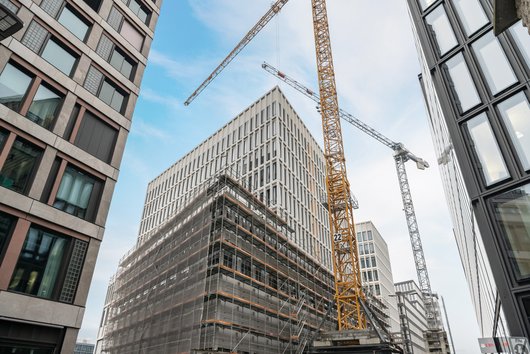

Technical data for site D
-
Gross floor area25,150 m²
-
Office space15,730 m²
-
Retail & hospitality space3,750 m²
-
Lengthapprox. 75 m (trapezoidal)
-
Maximum projection9 m
The façade elements for the building on site F feature a combination of materials including different natural stones and glass brick elements framed in metal profiles. They arrived on site as prefabricated elements and were installed in one piece.
First class
Zurich-based architectural firm Boltshauser Architekten were responsible for planning the building on site F. The firm’s trademark is their use of glass bricks and clay, both in building façades and interior fittings. In keeping with this, the individual façade elements – which were delivered as prefabricated elements and installed in one piece – feature a combination of materials including different natural stones, glass brick elements and hinged, openable windows, all framed in metal profiles. These elements use two different sorts of natural stone: red sandstone and polished shell limestone. All windows are also shaded by external solar shading
Pleasant climate
The materials used in the façade have also been used in the building’s interior. Glass brick elements have been integrated, particularly in wet rooms. In addition, the stone used in the façade has been used again as a floor covering. The architects also integrated clay elements in this project, which has been used as ceiling plaster, with a rather more durable fine lime plaster applied to the walls. The clay acts as a buffer to regulate air humidity in the apartments and ensures a pleasant indoor climate.
In contrast to sites B and D, on site F PORR also completed the internal construction and installed interior fittings. This work involved apartments that had been planned in detail by the architects. In fact, they even designed some elements of the interior fittings themselves, and commissioned small-series production after consulting with the building owners. The commissioned elements include a suspended metal kitchen element that serves as a wall cupboard, a suspended mirror cabinet in the wet rooms, and a base cabinet to fit under the washbasins. Glass-brick lamps, specially developed for this project, have been installed in the entrance areas to the residential towers and in the lobbies outside the lifts on each floor.
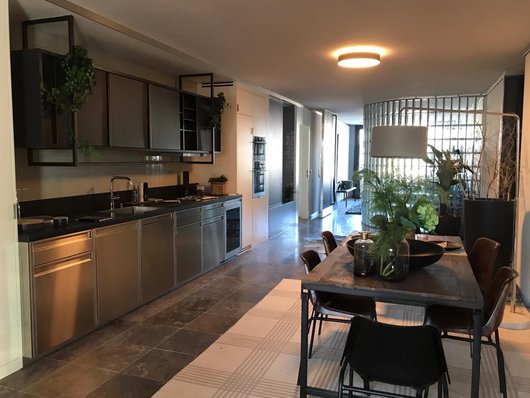

Technical data for site F
-
Gross floor data51,500 m2
-
Office space5,950 m2
-
Retail & hospitality space2,850 m2
-
Length140 m
-
Width49 m
-
Height56 m
-
Façade area21,500 m2
-
Building volume178,750 m³
-
Excavation volume40,000 m3
-
Concrete poured27,500 m3
-
Piles131
-
Columns1,800
Result
PORR worked on three construction sites in the Europaallee urban development area over a five-year period. In addition to these three sites, PORR SUISSE AG also constructed the Europaallee stairway and bike park and demolished the Postbrücke installation platform. PORR successfully handed all projects over to the client on time and to the client’s full satisfaction, in the summer of 2020.

